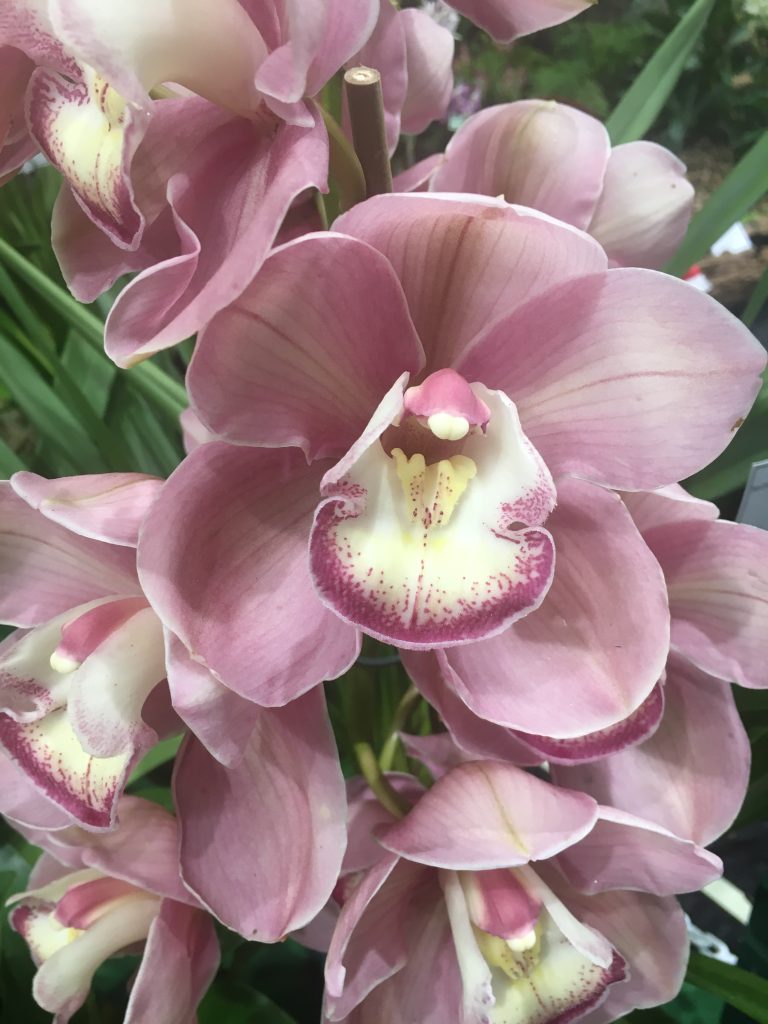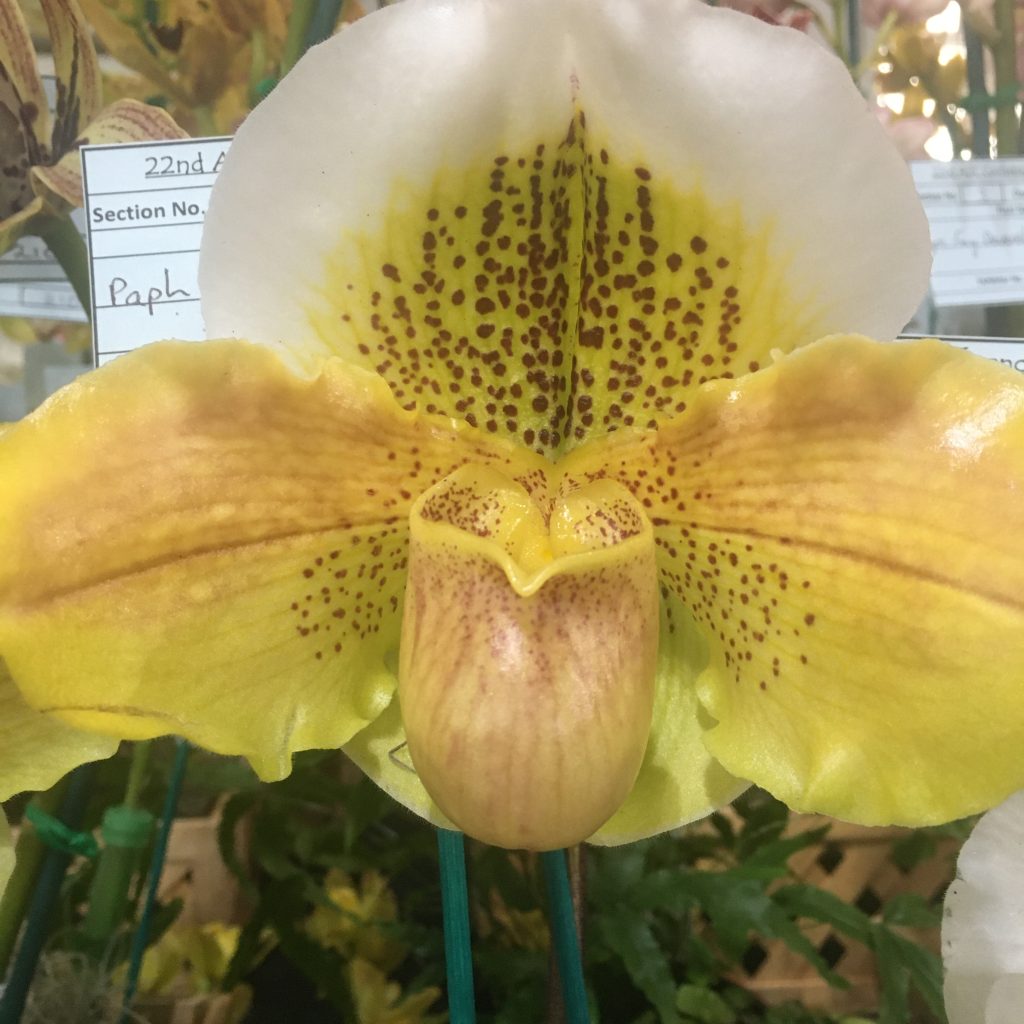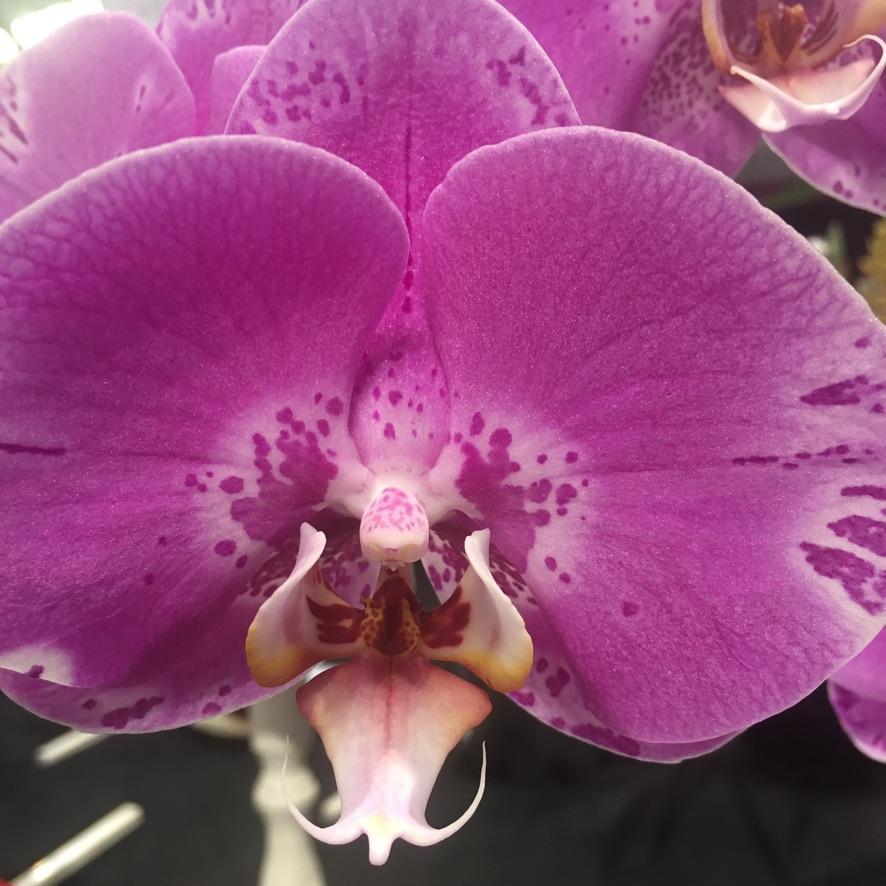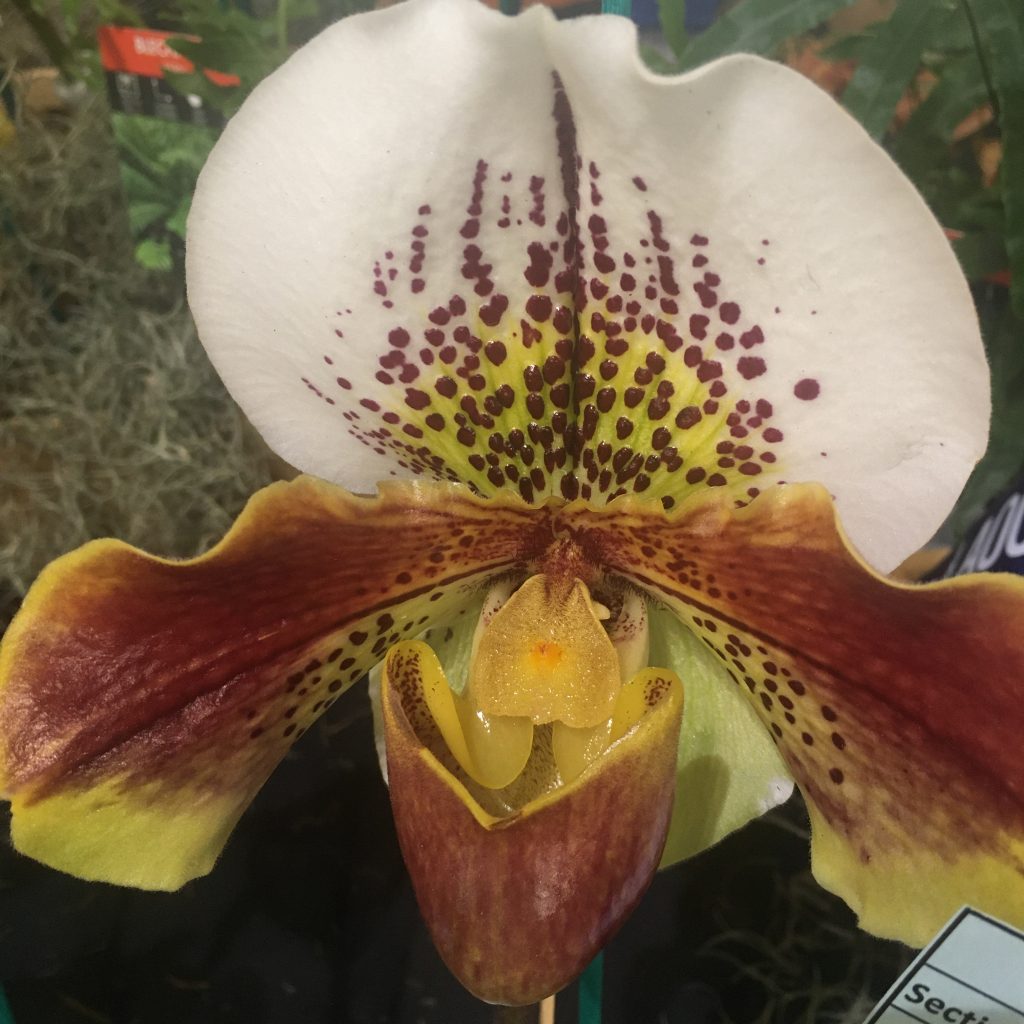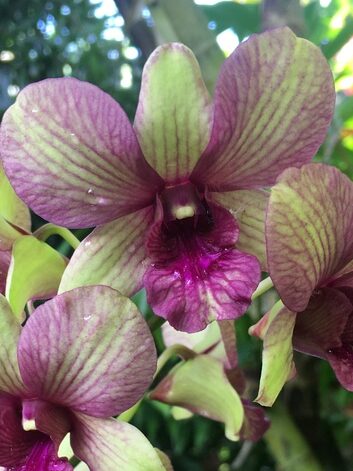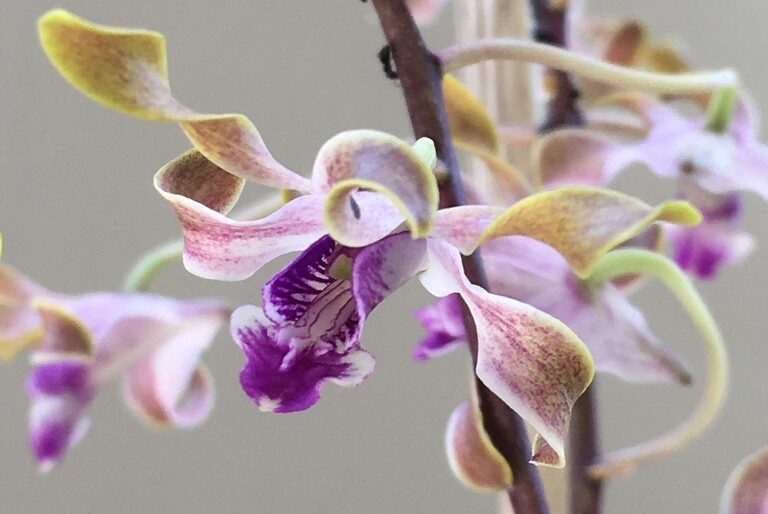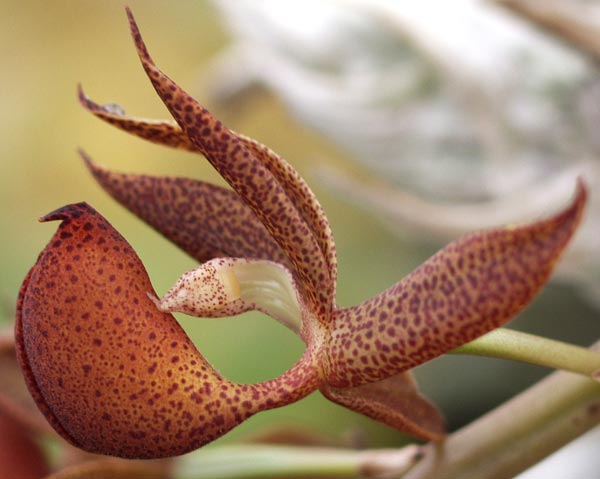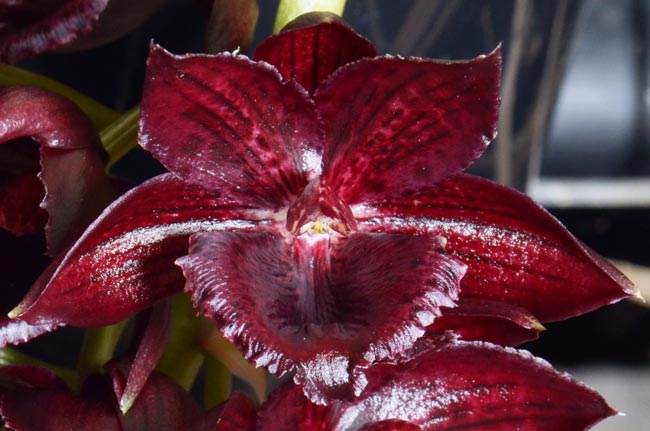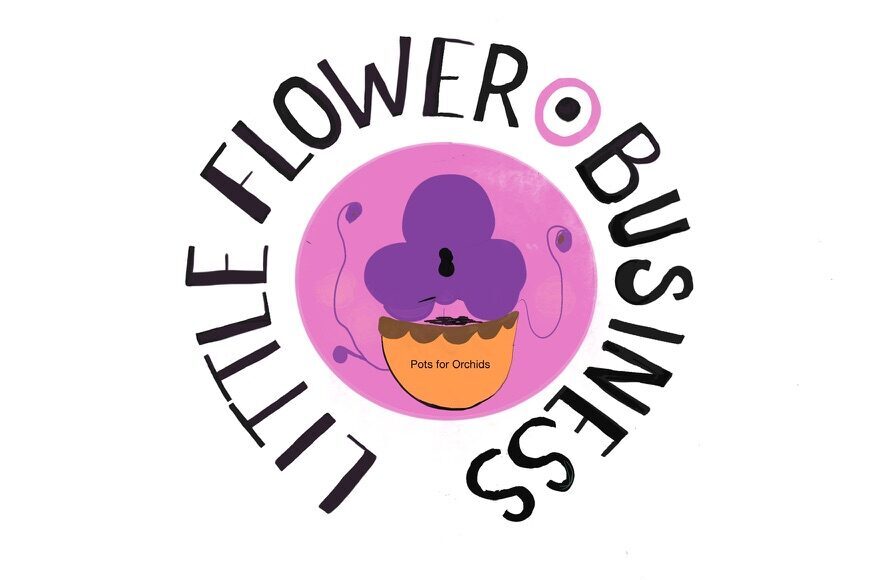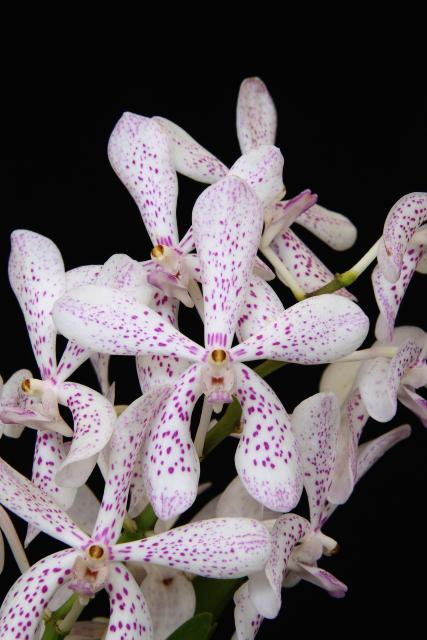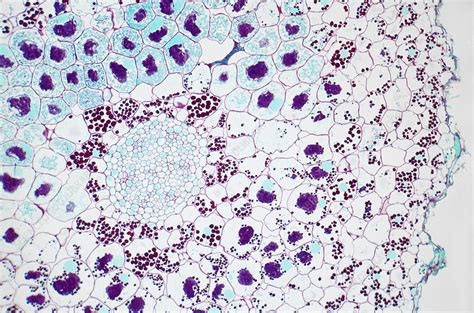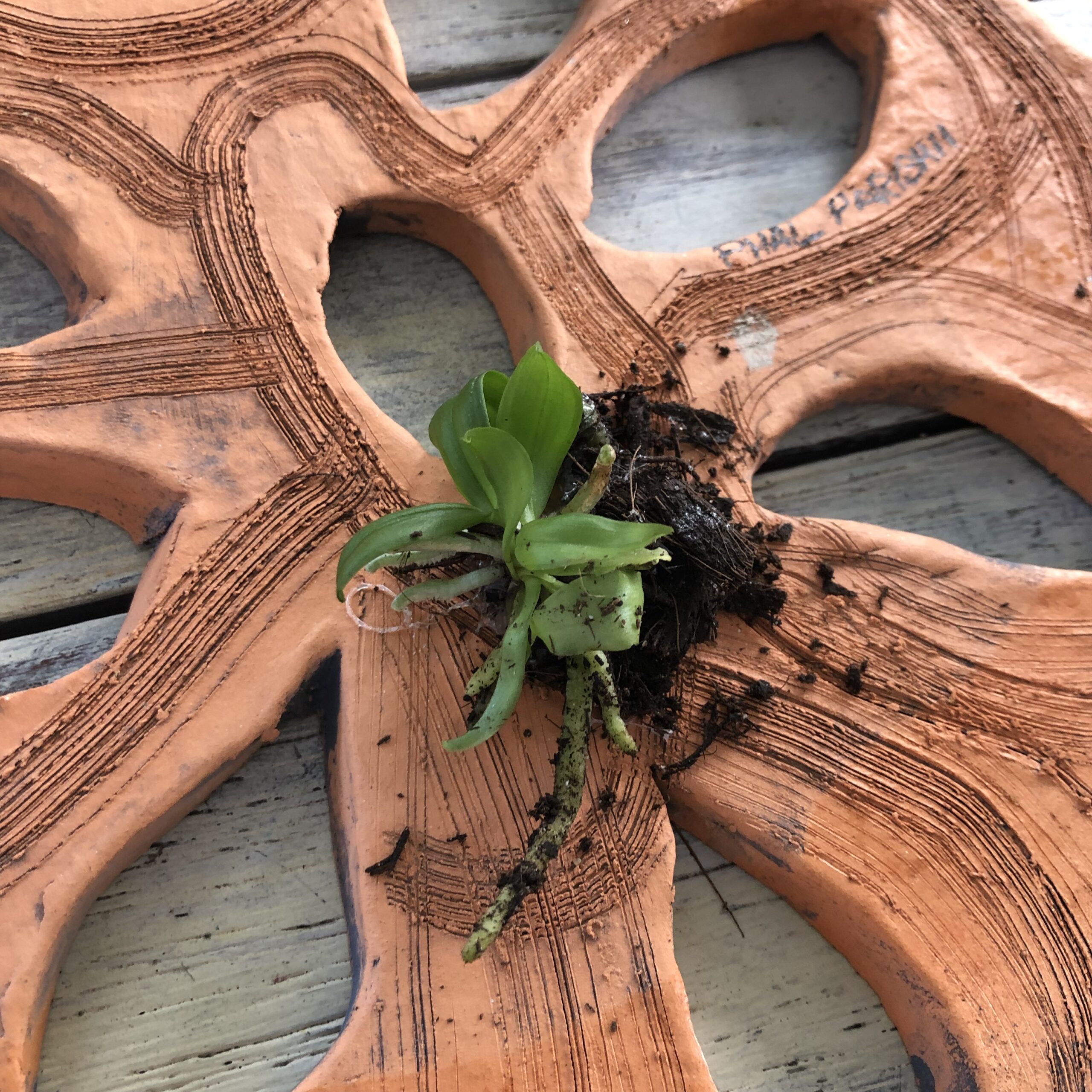by Susan Fairbairn and ai
The Labellum, or lip, is the star of the orchid show. This modified petal is often the largest and most visually striking part of the flower. Its primary role is to attract pollinators–bees, wasps, moths, and birds.
The labellum serves as a landing platform, guiding the pollinator to the nectar-rich part of the flower, which is usually located at the base of the lip. It can often features patterns, colours, or textures that guide pollinators towards the reproductive parts of the flower.
In some species, the labellum mimics the appearance of female insects to attract male pollinators–pseudocopulation–and some labellums contain nectaries to reward pollinators.
Hummingbirds often pollinate orchids with red or orange labellums. For more in depth information about orchid pollination This is a really interesting and well crafted read from Carol Siegel.
The labellum’s shape, size, color, and texture can vary greatly among orchid species, and it’s often a key characteristic used to identify and distinguish between different types of orchids. Some labellums are long and thin, while others are short and rounded. Some are brightly coloured, while others are more subdued.
The Many Faces of the Labellum
Labellums come in many shapes, sizes, and colours. Some of the most fascinating include:
- Lobed labellums: These have distinct divisions or lobes.
- Fringed labellums: With delicate, hair-like fringes.
- Saccate labellums: Pouch-like, often with a sweet reward inside.
- Spurred labellums: With a long, hollow extension at the back.
Types of lips and interesting features:
- Bucket orchids (Coryanthes): The lip forms a bucket filled with a fluid that temporarily traps bees, guiding them to exit past the pollen.
- Flying duck orchid (Caleana major): The lip resembles a duck in flight and is hinged, snapping shut to trap insects.
- Bee orchids (Ophrys): The lip mimics female bees in appearance and even produces pheromones to attract male bees.
- Moth orchids (Phalaenopsis): Have a large, flat lip that serves as an attractive landing platform for moths.
- Dancing lady orchids (Oncidium): The lip resembles a skirt and moves in the wind, attracting pollinators.
- Dracula orchids: Have a hinged lip that moves in the wind, resembling small fungi to attract fungus gnats.
Interesting Facts about Orchid lips
- Some can change color or shape over time to attract different pollinators at different stages of their life cycle.
- The orientation can vary between orchid species, with some having it upright and others hanging down.
Enter the orchid breeder
Breeding for the Perfect Pout: The Pursuit of the Showiest Orchid Labellum
An orchids’ lip, has long been a focal point for orchid enthusiasts and breeders alike. The quest for the most extraordinary lip has driven countless hours of meticulous hybridisation.
Creating a show-stopping lip is a blend of art and science. Orchid breeders meticulously select parent plants with desirable traits, such as:
- Size: A larger lip is often considered more desirable.
- Color: Vivid, contrasting hues can be particularly striking.
- Shape: Unique and intricate shapes can capture attention.
- Texture: Velvet-like or ruffled lips can add dimension.
Once suitable parents are chosen, the delicate process of pollination begins. This can be a time-consuming and painstaking task, as it often requires specialised tools and knowledge.
Orchid Hybrids with Remarkable Labellums
Over the years, orchid breeders have produced a staggering array of hybrids with breathtaking labellums. While it’s impossible to name them all, some notable examples include:
- Cattleya hybrids: Renowned for their large, often ruffled labellums in a kaleidoscope of colors.
- Phalaenopsis hybrids: Producing increasingly diverse labellum shapes and patterns, from classic to exotic.
- Paphiopedilum hybrids: Known for their pouch-like labellums, breeders have focused on enhancing color and pattern complexity.
It’s important to note that while the pursuit of the perfect labellum is a driving force, ethical considerations and the preservation of biodiversity are also crucial in orchid breeding.
The Future of Labellum Breeding
As technology advances, so do the possibilities for orchid breeding. Techniques like tissue culture and genetic engineering offer new avenues for creating novel and extraordinary labellums. However, these developments also raise ethical questions about the future of orchid diversity. There’s a risk of prioritising aesthetic appeal over the preservation of naturally evolved traits that are crucial for survival in the wild.
Ultimately, the allure of the orchid labellum lies in its ability to captivate and inspire. Whether found in nature or cultivated by human hands, it remains a testament to the extraordinary beauty and complexity of the plant world.
Do you want to learn more about growing orchids, then start here
The American Orchid Society contains a wealth of information on everything orchids
